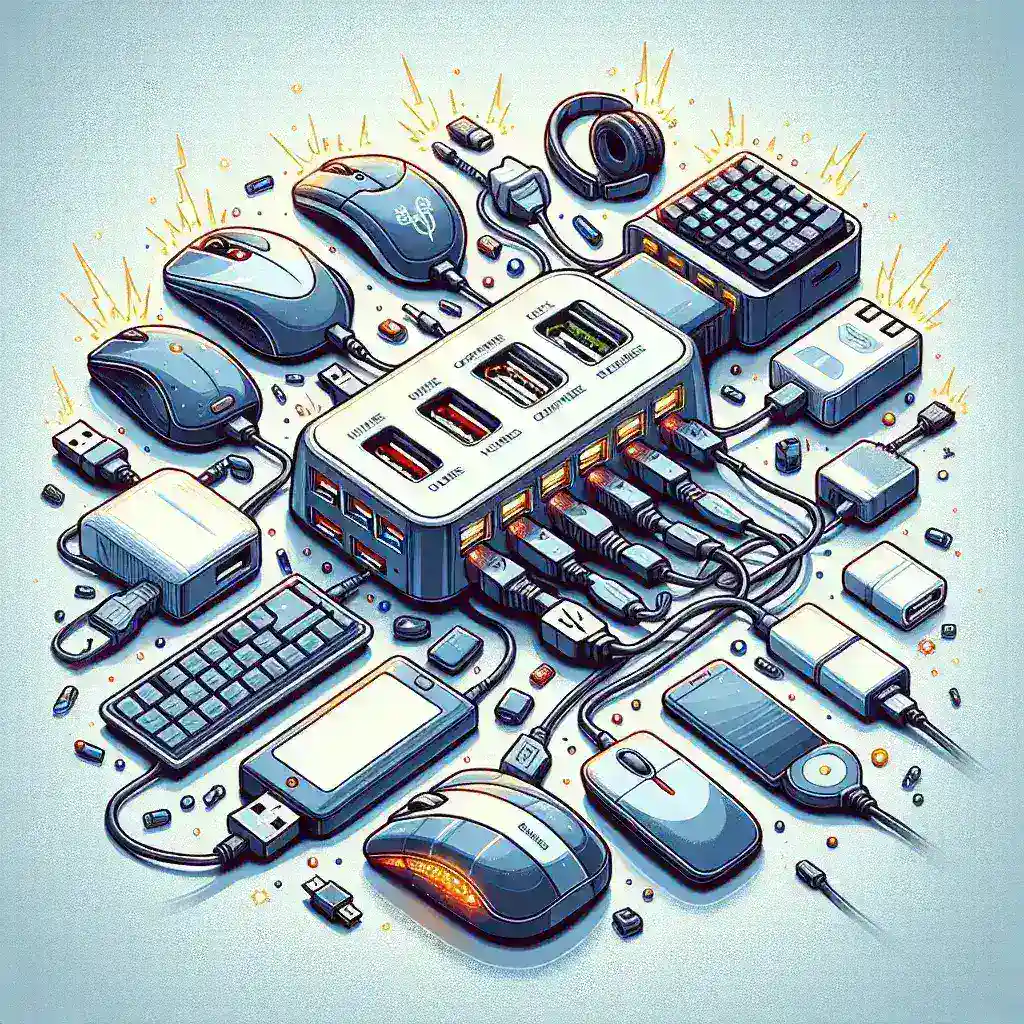In our increasingly digital world, USB hubs have become essential devices for expanding connectivity options for computers and other gadgets. These handy devices allow users to connect multiple USB peripherals, such as keyboards, mice, external drives, and printers, through a single USB port. However, just like any electronic device, USB hubs can experience issues when overloaded. Recognizing the signs of an overloaded USB hub is crucial to ensure optimal performance and device longevity.
Signs of an Overloaded USB Hub
When a USB hub becomes overloaded, it can lead to various symptoms that affect the connected devices and the hub’s functionality. Understanding these signs will help you identify potential issues early on. Below is a table summarizing key indicators of an overloaded USB hub:
| Signs | Description |
|---|---|
| Device Disconnects | USB devices connected to the hub may frequently disconnect or fail to recognize. |
| Slow Data Transfer | File transfers and data synchronization processes become significantly slower than usual. |
| Power Loss | Some devices may not power on or operate properly due to lack of sufficient power. |
| Hub Overheating | The USB hub may feel excessively hot during operation, indicating strain. |
| Frequent Errors | You may experience USB device errors or notifications advising to disconnect devices. |
Understanding USB Hub Capacity
USB hubs come in various types, each with its own specifications and limitations. It’s essential to understand your USB hub’s capacity to prevent overloading. Typically, USB hubs are classified into two categories: powered and unpowered.
Powered USB Hubs
Powered USB hubs include their own power supply, allowing them to provide sufficient power to multiple devices. These hubs can support more devices without compromising performance. They are ideal for connecting power-hungry devices, like external hard drives and printers.
Unpowered USB Hubs
Unpowered USB hubs rely solely on the power provided by the computer’s USB port. These hubs have a limited capacity to supply electricity, making them suitable for lower-powered devices like mice and keyboards. When using unpowered hubs, it’s crucial to limit additional power-hungry devices to prevent overload.
Common Causes of USB Hub Overloading
Understanding the common causes of USB hub overload is vital to preventing future issues. Here are some factors that contribute to USB hub overload:
- Excessive Device Connections: Connecting too many devices, especially power-hungry peripherals, can quickly overload the hub.
- Inadequate Power Supply: Using an unpowered USB hub for devices that require more power can lead to failure.
- Old/Defective Hubs: Older models may not support the latest USB standards, limiting their ability to handle multiple devices.
- Faulty Cables: Damaged or low-quality USB cables can create additional resistance, causing devices to draw more power.
How to Prevent USB Hub Overloading
Preventing an overloaded USB hub involves a few proactive measures to ensure that your devices function without interruptions. Here are some practical tips:
- Assess Device Power Needs: Before connecting devices, evaluate their power requirements and the hub’s capacity.
- Use Powered Hubs: Opt for a powered USB hub when connecting multiple high-power devices.
- Limit Connective Devices: Avoid connecting too many peripherals to a single hub; distribute the load among multiple hubs if necessary.
- Regularly Update Firmware: Keep your USB hub’s firmware updated to ensure optimal performance and compatibility with new devices.
Troubleshooting an Overloaded USB Hub
If you suspect that your USB hub is overloaded, the following troubleshooting steps can help identify and resolve issues:
1. Disconnect Devices
Start by disconnecting all devices from the USB hub. This can help you determine if the hub itself is functioning correctly without the load of the connected devices.
2. Test Power Supply
In the case of powered USB hubs, test the power adapter to ensure it provides adequate power. Check for any signs of damage to the adapter or hub.
3. Check for Errors
Reconnect devices one at a time, observing for any disconnects or errors. This can help identify problematic devices.
4. Change USB Ports
Try connecting the hub to a different USB port on the computer; sometimes, the issue may lie with the USB port rather than the hub itself.
5. Update Drivers
Ensure that the USB drivers on your computer and the firmware on your hub are up to date, as outdated software can lead to performance issues.
Conclusion
In conclusion, understanding how to identify an overloaded USB hub is important for maintaining the functionality of your electronic devices. By recognizing the signs, being aware of hub capacity, and taking preventive measures, you can avoid the pitfalls of USB overload. Should issues arise, troubleshooting steps such as device disconnection and software updates can help restore optimal function. Keep your devices active and ensure seamless connectivity with the right practices around USB hub management.

